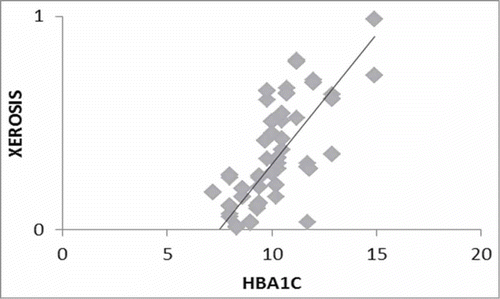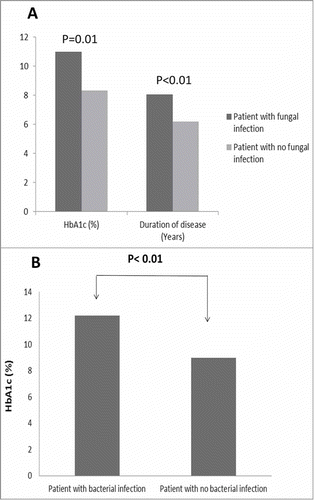Figures & data
Table 1. Demographic and laboratory characteristic of studied patients and healthy controls.
Table 2. Distribution of cutaneous disorders in relation to microalbuminuria.
Figure 1. Effect of glycemic control and disease duration among patients with fungal and bacterial infection. showed that patients with fungal infection had significantly higher HbA1c with a mean value of 10.98 ± 1.6% compared to 8.33± 2.6%(P = 0.01), additionally these patients had longer disease duration with mean of 8.07± 3.8 years compared to 6.19 ±2.9 years(P<0.01). illustrated highly significantly values of HbA1C in patients with bacterial infections with a mean value of 12.2 ± 1.4% compared to 7.45± 3.9% (P < 0.01) in patients with no bacterial infection ().


